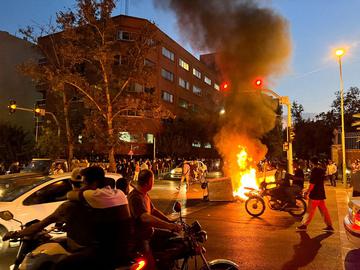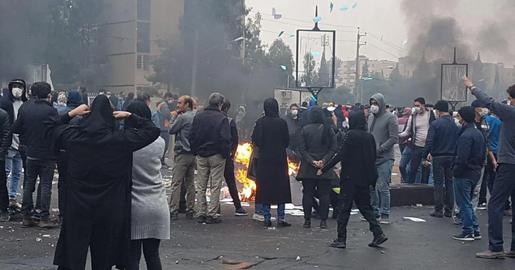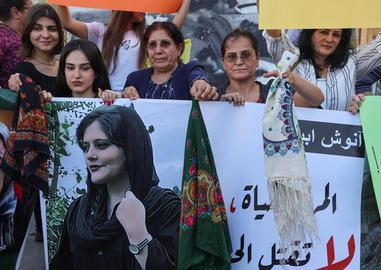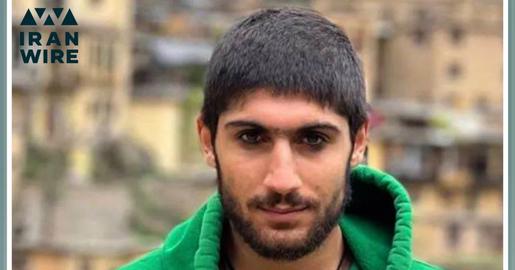Hardliners in the Iranian media have called on security forces to respond with more force against demonstrators and to act against western countries who they accuse of fomenting the protests. Saturday saw another wave of protests sweep across the country, with the capital and several other cities witnessing violent clashes between angry protesters and riot police. The death toll of the protests reached at least 185 people, according to reports, with at least 19 children among the dead.
But many Iranian newspapers went to print Sunday without reporting the widespread protests that have entered a fourth week. Some reformist papers carried short articles provided by the state's news agency. Iran Newspaper, the official media outlet of the government, said there were a "small number of rioters" and claimed protesters were "making up" deaths to encourage more people to join them.
The newspaper also claimed protesters killed a driver in western Sanandaj city. However, footage obtained by IranWire shows security forces shooting dead a young driver who was honking his support for protestors in the city by firing directly at his head. Videos from the city show a man's body on the steering wheel, blood pouring from his head, as a woman screams and other protesters flee.
Hossein Shariatmadari, the hardline editor of the newspaper Kayhan, blamed Saudi Arabia for the ongoing unrest and called on the security forces to violently suppress the people's movement.
"A country that has withstood all sorts of attacks from small and big world powers, over the past 43 years, should not put up with some ISIS kids rioting in its streets," Shariatmadari wrote Sunday. "Nor witness them burning public property, killing people on the streets and in the markets, cutting a police officer’s throat, burning the Quran, removing the hijab from women, or dozens of other crimes."
He criticized Iran's armed forces for not acting against Saudi Arabia.
"If a foreign country uses all its facilities and media capacity to incite riots, what should be done? Don't these actions show they are waging war? Is it possible to just sit back and watch?" he asked.
Shariatmadari also blamed the United States, the United Kingdom, France, and Israel for the new rounds of protests.
“Are our hands tied to prevent us punishing them? Each of those governments has sensitive Achilles' heels that are easily vulnerable. Damage to them would inflict unbearable costs. They should know that day is not far away," he warned.
Almost all newspapers covered President Ebrahim Raisi’s speech at a female-only university on their front pages. Raisi addressed faculty and students at Al-Zahra University, in Tehran, during which he recited a poem that equated “rioters” to flies. Students could be seen showing their middle fingers and chanting “Raisi get lost!”
But the hardline outlet, Fars News, a news agency affiliated with the Revolutionary Guards, suggested armed forces "break down the chain" of demonstrators and suppress them more violently. It claimed the protesters were "killing people" to get international media coverage.
"If there was not Mahsa Amini, they would find other excuses," it said. "They would kill more people, just as they are doing these days."
"Universities in the capital and some other cities witnessed organized student gatherings," IRNA, the state news agency reported. “Nearly two hours after the President attended the ceremony to start the new academic year at Al-Zahra University, some students gathered outside the campus and chanted protest slogans, and 150 people in Amir Kabir University, 100 people from the Technical Faculty of Tehran University, 30 people from Sharif University, 30 people from Allameh University and 35 people from Azad University of Medical Sciences gathered and chanted slogans."
It also claimed that a small number of people, not more than 100, gathered in other cities. It is not clear how these numbers were arrived at, but IranWire reported in its daylong coverage on Saturday that violent protests were sweeping the country with at least hundreds of people taking to the streets in around two dozen cities across Iran.
On Sunday, Iranian media were trying to show the situation in the country as “calm” and under the control of security forces. But social media footage suggested more people were coming out, despite a heavy presence of riot police and other security officers.
Now entering their fourth week, the anti-government protests sweeping Iran have left authorities in Tehran seemingly increasingly frightened by the scale and determination of the popular uprising against the Islamic Republic. Security forces have, as a result, become increasingly ruthless in their attempts to crush the movement.
Meanwhile, the death toll reached to at least 185 people, including at least 19 children, according to the Norway-based Iran Human Rights group.
The highest number of killings occurred in Sistan and Baluchistan province with half the recorded deaths.
"In many cases, particularly those of young girls, security forces have subjected families to arrests, coercion and duress to force them into announcing their children’s deaths as suicide on camera, or to keep them quiet," the group said in a statement Saturday.
"Protesters have been killed in 17 provinces, with the most reported in Sistan and Baluchistan, Mazandaran, Gilan and Western Azerbaijan. Some were killed instantly, and some passed away from their injuries later. The most deaths were reported on 21, 22 and 30 September," it added.
Iran has witnessed waves of anti-government protests over recent years. In November 2019, the country saw the deadliest violence since the 1979 Islamic Revolution, as protests erupted over gas price hikes. Hundreds were reportedly killed at that time. The ongoing protests are the biggest since the 2019 unrest.
visit the accountability section
In this section of Iran Wire, you can contact the officials and launch your campaign for various problems
























comments